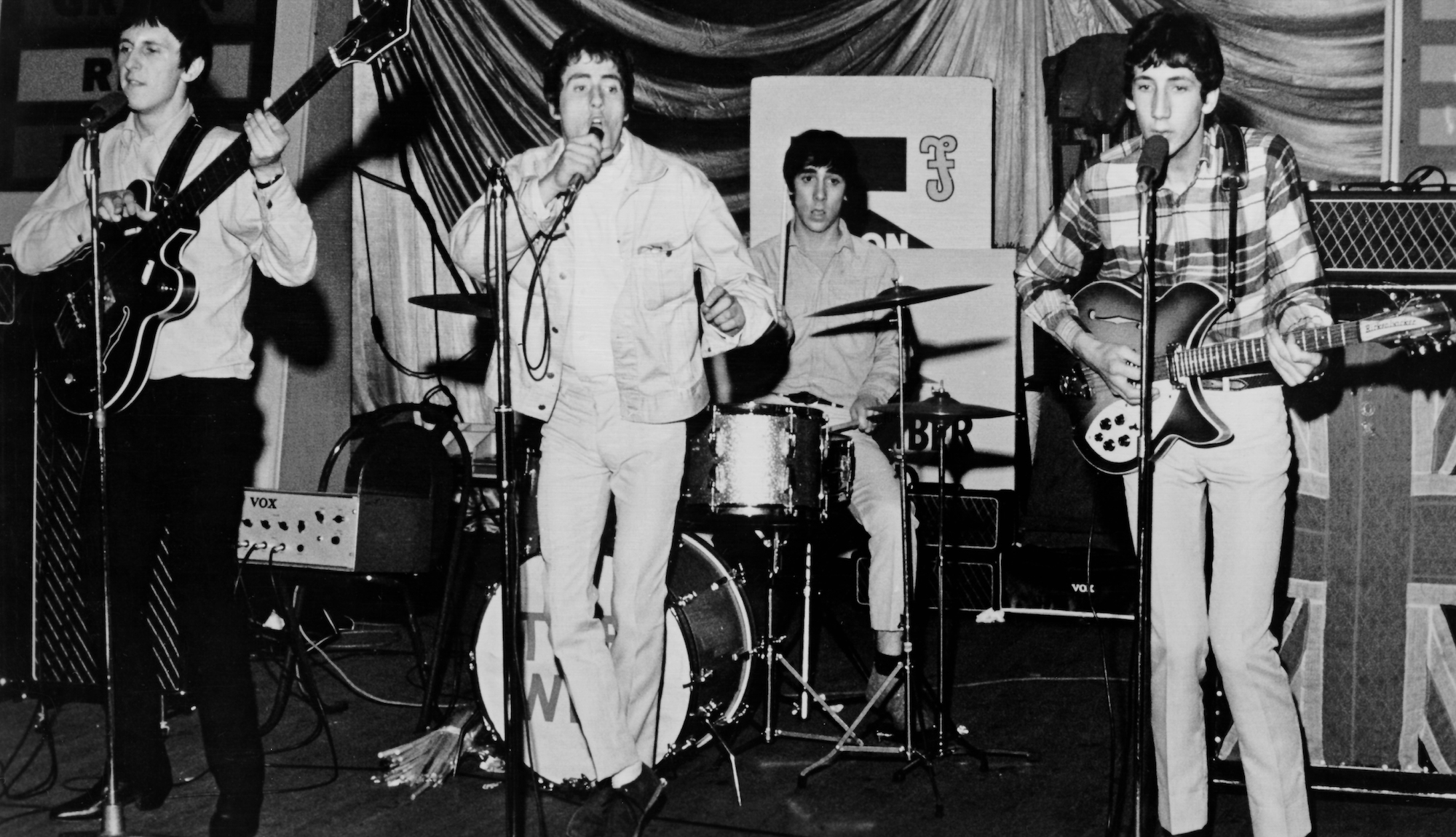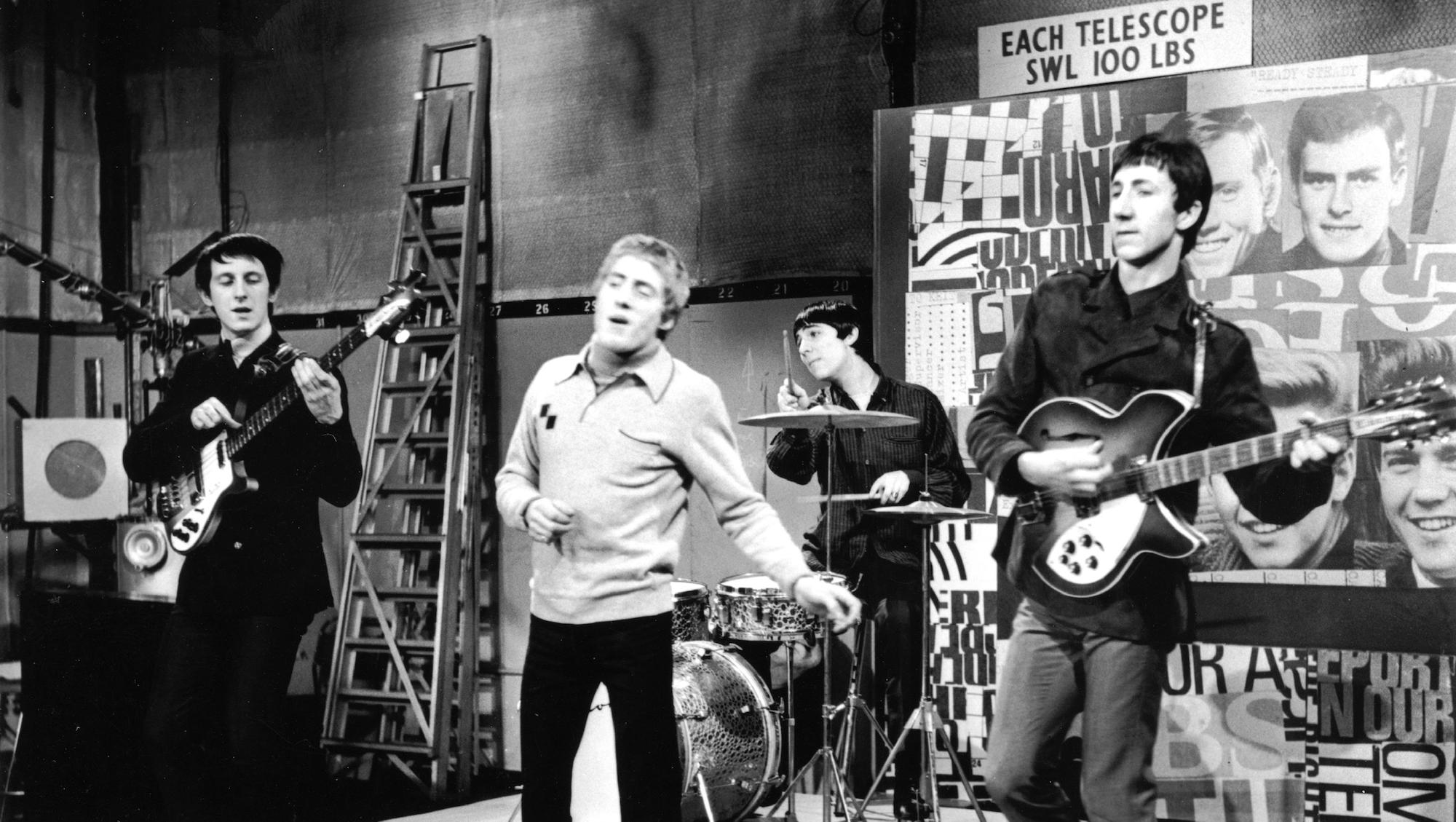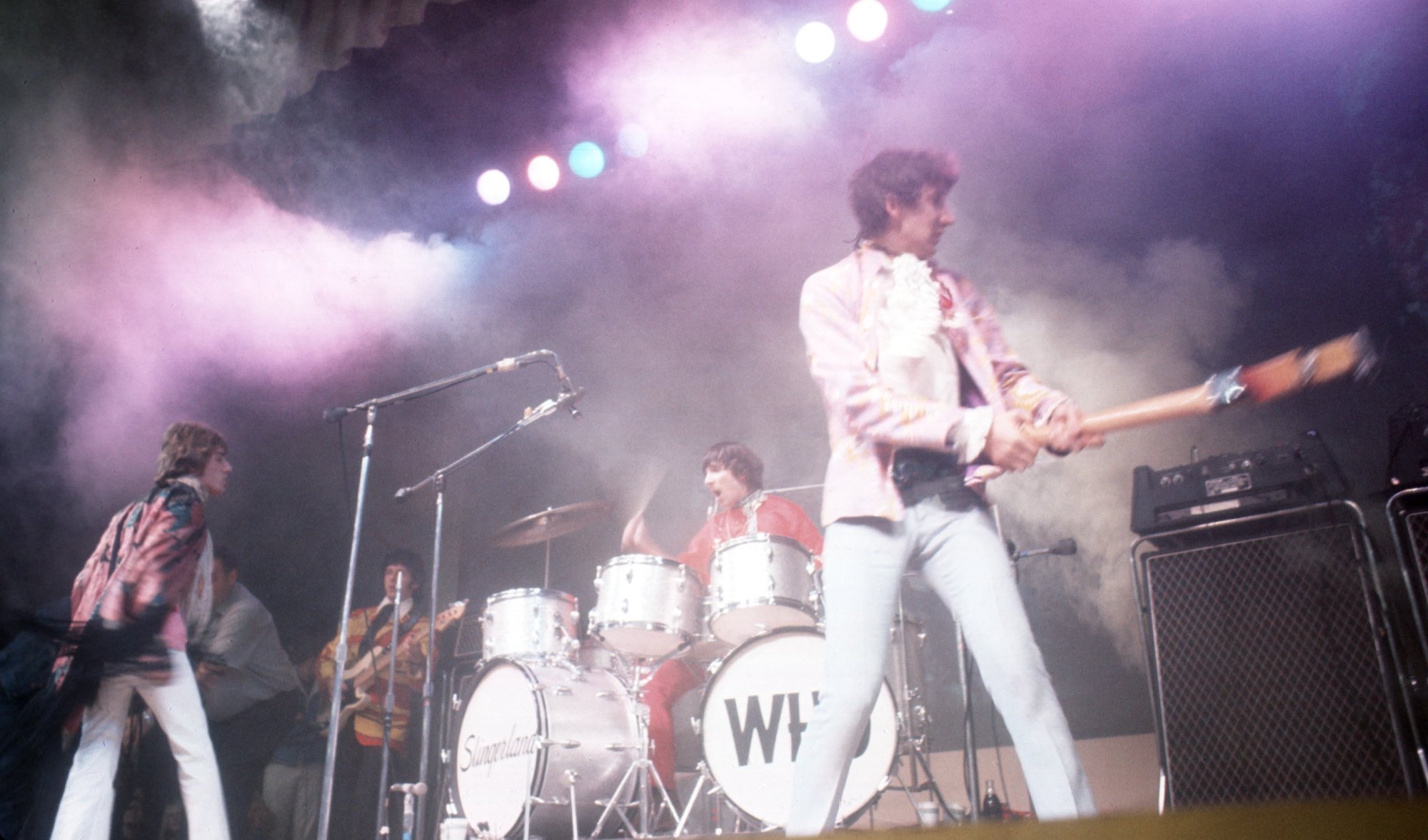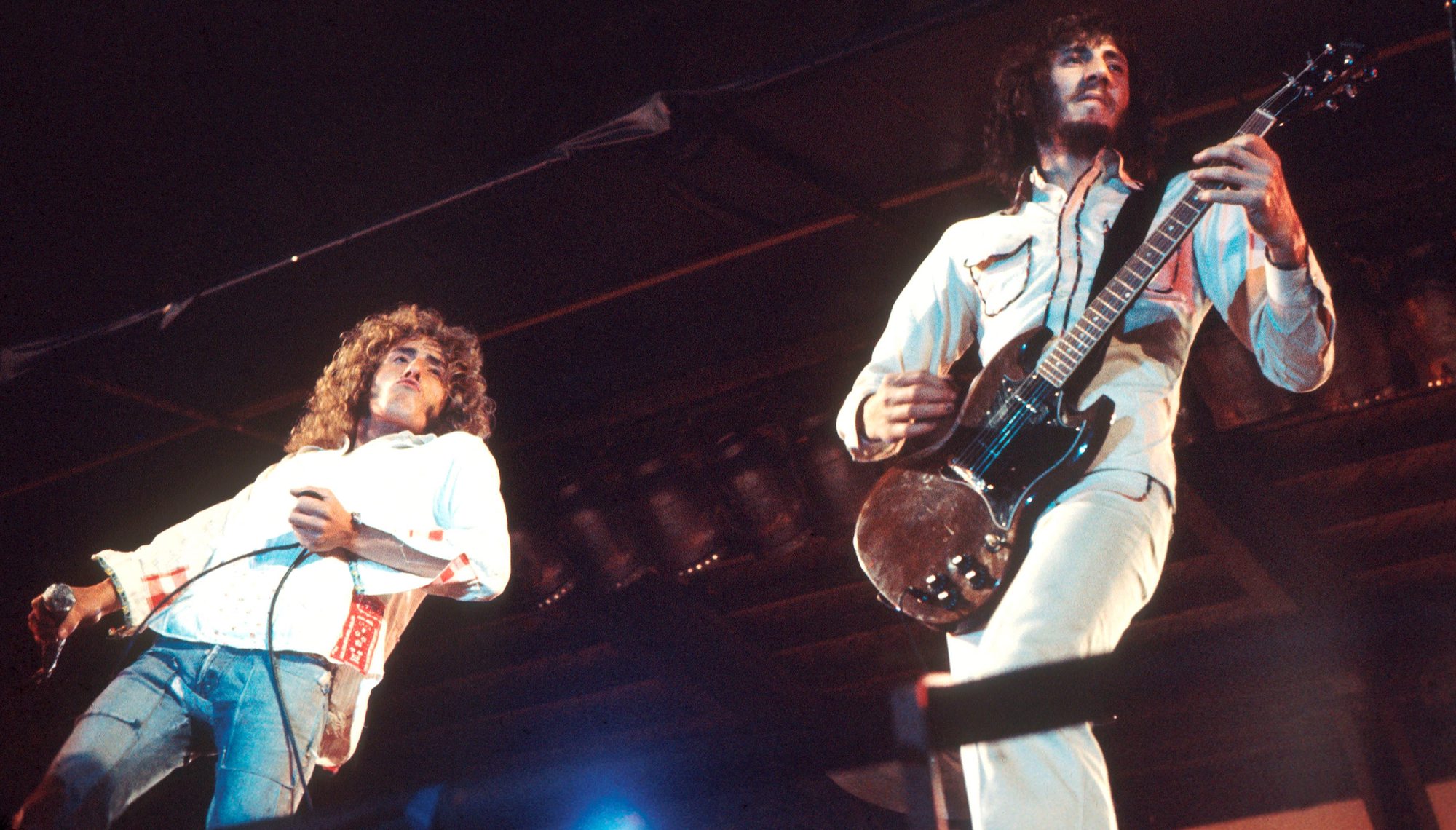Pete Townshend: "I was at an art school where the course was dedicated to breaking the rules, and I just drafted that into my work as a guitar player"
In this candid 1994 GW interview, The Who's six-string creative mastermind discusses his time with Page and Hendrix, Marshall stacks, his aggressive playing style, and more

This October 1994 interview with Pete Townshend was first run on guitarworld.com in 1996.
A few years ago, many of the Who's great rock anthems – including I Can't Explain, My Generation, I Can See For Miles, Pinball Wizard, Won't Get Fooled Again and Baba O'Riley – were remastered with a new crystalline clarity for the band's four-CD boxed set, 30 Years of Maximum R&B.
Since then, MCA has reissued much of the band's catalog – including the Who by Numbers and Live at Leeds – featuring these newly cleaned up versions. Meanwhile, Columbia finally released the Who's long-legendary performance at 1970's Isle of Wight Rock Festival.
Furthermore, the band recently completed a hugely successful Quadrophenia tour, their first extended jaunt in many a moons. So the time seemed right to dip back into the GW archives and take a second look at this fantastic interview, which first ran in the October 1994 issue.
Who were the first guitarists that really inspired you?
"The first guitarists I listened to were country and pop players. People like James Burton playing with Rick Nelson. Burton is probably the most important guitar player in American music, in some ways. He was the first guy I ever heard make a normal guitar sound like a pedal steel, bending those strings, which was also something that came out of the blues and connected blues up with pop: the bendy-string phenomenon.
"It must be hard for guitar players today to even understand the difficulty of bending a string in 1962. The string sets they sold back then only came in one heavy gauge. But Burton hit on the idea of using two second strings instead of a second and a third, and that made bending much easier.
Get The Pick Newsletter
All the latest guitar news, interviews, lessons, reviews, deals and more, direct to your inbox!

"I also studied Chet Atkins, and I listened to Wes Montgomery, Barney Kessel and Johnny Smith a little bit – the guitar players of my father's music era, really. [Pete's father, Cliff, was a successful dance-band saxophonist in Britain.]
"I suppose Wes Montgomery was the top gun. There's a certain lyricism to what he did that I try and shoot for in my solos. And then later, when I got into the blues, I started listening to guitar playing in a different way. I loved John Lee Hooker for the visceral style of his early electric recordings. And then there was a whole rush of jazz players like Kenny Burrell, and then his influences, people like Charlie Christian."
One hallmark of your style is the way you shift chord shapes around on the high strings while sustaining the open D, A or E string. Substitute is perhaps the earliest example of your doing so. Where does that come from?
"It might have come from the fact that, for a long time, I couldn't afford strings. So after I'd broken a couple of strings, I used to take the strings that were left and group them together in the middle of the guitar and make up chord shapes around them. So I think that I was actually working in a kind of early bluegrass style of harmonic playing, where you're playing as many as two or three strings open, with a dulcimer-like technique-but then trying to make it sound like rock and roll.
"I was certainly inventing new fingerings, those fingerings being very simple. But also remember that the first band I had with John Entwistle was a traditional jazz band [the Confederates] and I played banjo. So I started listening to banjo players, and to bluegrass playing in particular."
What's the real story of the guitar solo on I Can't Explain? It's sometimes attributed to Jimmy Page. Other reports have it that you and Page both cut very similar-sounding solos, and no one is sure which one made it to the final mix.
"The solo's me. Jimmy was there at the session but he doesn't play like that. There was a [session] drummer there, too. Keith Moon just threw the guy's drums out the door. But Jimmy was a friend of mine. We'd had a mutual girlfriend; I was going out with her around the time that we made that record. And she'd gone out with Jimmy before and was still kinda hooked on him – for a little longer than I was comfortable with.
"Anyway, she was much older than us. We were 19 and 20 and she was about 30. And a fucking sexy woman! She'd obviously fucked him to death and then proceeded to fuck me to death. We were both kind of cross-eyed with this woman.
"So when Jimmy showed up, we just started to talk about what we always talked about: 'How's Anya?' And then I said to him, 'What are you doing here?' He said, 'I'm here to give some weight to the guitar. I'm going to double the rhythm guitar on the overdubs.' And I said, 'Oh, great.' And he said, 'What are you going to play?' 'A Rick 12,' I told him. And he said, 'Oh, okay, I'll play a...' whatever it was.
"It was all very congenial. But meanwhile, Keith was over in the corner, telling the drummer, 'Get out of the fucking studio or I'll kill ya. On a Who record, only Keith Moon plays the drums!' That kind of stuff. And the backing vocals were done by some surf band."

Your discovery of feedback has been well documented. But what about other "found" sounds on guitar that you pioneered in the early days – like flipping the toggle switch rhythmically or scraping the mike stand across the strings? Were those things as accidental as your discovery of feedback?
"No, they were very considered. They were all part of that art school tradition I'd got, of breaking the rules. I was at an art school where the course was dedicated to breaking the rules and I just drafted that into my work as a guitar player. Most of the techniques I used were very virulent, violent and aggressively expressive."
"I got into the idea of rock and roll – its socio-political function, if you will, more than its musical content. So the guitar for me has always been a gun. And the only thing you could do with a machine gun in the Sixties was break it across your legs, and that's what I did.
"I suppose that I do sometimes sit down with an acoustic guitar and try to use the guitar as an instrument of love and communication. But even the way I play acoustic is very aggressively rhythmic. My best work is rhythmic and machine-gunny.
"Because, as I said, I was in this mode where the guitar was a weapon. And, wonderful though my Fender Pro amp sounded, it wasn't loud enough. So I went out and bought a Fender Bassman as well and plugged into both. And, wonderful though that was, it wasn't loud enough either.
"So I went to Jim Marshall's [then a music store in London], threw down my Fender Bassman and said, 'I want that, twice as loud.' And, almost like Krups, the military manufacturer, Jim Marshall's eyes sort of lit up and he said, 'I will supply this man with the weapon he requires.' And from that came the Marshall stack and the big amplifiers of the Sixties.
"The toggle switch thing was literally to make the guitar sound like a machine gun when it was feeding back. And when I bought my first Rickenbacker, I packed it with paper and found I could actually produce feedback on select harmonics, which was quite extraordinary.
"You can hear it briefly on Anyway, Anyhow, Anywhere. And I could reproduce it live. I could actually do that by moving the guitar in relationship to the speakers and get harmonics. That was extraordinary to me, to be able to reproduce that live. And as long as I kept that guitar – which was briefly, unfortunately – I could do it. It was a stunning example of how we were able to reproduce very difficult studio recordings live."
Did you have a lot of opportunity to hang out with Jimi Hendrix? Jam with him?
"No, I would never have dreamed of jamming with him. Get out of here."
There's an interview with Roger [Daltrey] in the new video [30 Years Of Maximum R&B; Live] about a jam he witnessed under a stage where Hendrix was playing and so was [Mamas & the Papas vocalist] Cass Elliot.
"That was at Monterey. But I wasn't jamming. Jimi was on acid. And he stood on a chair. And I was trying to get him to talk to me about the fact that I didn't want the Who to follow him onto the stage. John Phillips [also of the Mamas & the Papas, and an organizer of the Monterey festival] was there.
"I don't remember if Mama Cass was. And I was saying to Jimi, 'For fuck's sake Jimi, listen to me. I don't want to go on after you. It's bad enough that you're here. It's bad enough that you're gonna fuck up my life. I'm not gonna have you steal my act. That's the only thing I've got. You're a great genius. The audience will appreciate that. But what do I do? I wear a Union Jack jacket and smash my guitar. Give me a break. Let the Who go on first.' And he was kind of teasing me – playing the guitar and ignoring me. But Brian Jones told me later on that he was just fucking completely whacked on acid.

"So John Phillips flipped a coin and it came down in my favor, and I said, 'Right. We go on first.' And that has become apocryphally told as a story where I was arguing with Jimi. I was shouting at Jimi because he was ignoring me. [laughs] But I wasn't angry with him. I loved him very much. I got to know him in L.A. [after Monterey].
"Suddenly – maybe it was a different bunch of drugs he was using – he was very affectionate and friendly to me. And he'd started to acknowledge some of the things that I'd done to help his career. Such as they were. I don't mean to imply that I'd done all that much. But the Jimi Hendrix Experience were on Track Records [in England], which is the Who's record label. And we helped them with early dates and stuff. And obviously I was a stone supporter of his work.
"I was like a press machine on his behalf. And then he died. [pauses] So I never got real close to him. And I certainly never played with him."
After going to those kinds of sonic extremes on A Quick One and The Who Sell Out, the guitar on Tommy seems like a move away from the big amps, big volume, big feedback sort of stuff. Was that an intentional shift?
"Well, it was a shift that was very much in key with the shift in my songwriting approach at that time. We'd been nominated by our audience, in a way, to express their own inarticulacy – if that's not a contradiction in terms. But we suddenly found ourselves lost in the world of Jimi Hendrix and Cream.
"Cream had come over to the U.S.A. with us for the first time, with loud amplifiers and psychedelic shirts. These were, to some extent, new bands. Compared to them, the Who were an older band.
"So we were feeling quite out of touch, thinking, 'We're not selling singles anymore and neither do we fit into this new psychedelic era. We're not an experimental band like the Pink Floyd. We're not a guitar-based blues band like the Cream. We don't have the kind of extreme genius of Hendrix. What do we do?' And I started to look at composition as a big issue."
Who's Next emerged out of an extended conceptual piece, Lifehouse, which you ended up discarding.
"By the time that album was recorded, for the third time in my life, with Glyn Johns at Olympic Studios, I had very little interest in it. I'd been fucking damaged by the Lifehouse project. I'd come up with this fantastic idea, and it was going to be the great follow-up to Tommy. Unfortunately, nobody was getting it.
"Actually, the sort of things I was toying with have become like child's play today. For example, the plot included allusions to virtual reality. It just seemed like basic art school stuff. But, again, the band didn't understand. And the more I tried to explain it the more I realized I was Einstein to their cavemen. And in the end, I had an actual nervous breakdown.
"So by the time we were in the studio making Who's Next we had great music, and we were playing great because we'd recorded the album something like 15 fucking times! Glyn Johns had a very easy job. He made the record in two weeks.
"It sounded very fresh, somehow. And then he said, 'I think this should be a single album.' I said, 'But we've got 26 songs!' But he persisted, 'Well I think it will be better as a single album.' And that's what we got. And it was better as a single album – for commercial reasons."

At the other end of the spectrum, tell me about the Who's turn to a harder rock sound around 1970 and 1971.
"We had Tommy out there, we were out on the road a lot and we became a really extraordinary machine. We were a fucking great band. We were briefly called The Greatest Rock and Roll Band in the World, and we were.
"There was no question about it. I used to wake up on the stage every night and think, 'Oh my God, I'm riding this horse again!' It just got to be so extraordinary. We just got very good at what we did."
In a career that spans five decades, Alan di Perna has written for pretty much every magazine in the world with the word “guitar” in its title, as well as other prestigious outlets such as Rolling Stone, Billboard, Creem, Player, Classic Rock, Musician, Future Music, Keyboard, grammy.com and reverb.com. He is author of Guitar Masters: Intimate Portraits, Green Day: The Ultimate Unauthorized History and co-author of Play It Loud: An Epic History of the Sound Style and Revolution of the Electric Guitar. The latter became the inspiration for the Metropolitan Museum of Art/Rock and Roll Hall of Fame exhibition “Play It Loud: Instruments of Rock and Roll.” As a professional guitarist/keyboardist/multi-instrumentalist, Alan has worked with recording artists Brianna Lea Pruett, Fawn Wood, Brenda McMorrow, Sat Kartar and Shox Lumania.
“I’d always seen the guitar as a thing for really accomplished people like Jimi Hendrix – watching Nirvana on MTV Unplugged exploded my brain”: Studio nerd Corinne Bailey Rae broke through after moving on from her punk roots. Then she went back
“Elton said, ‘I'd better buy that guitar just to have in my house.’ I played it and said, ‘Yeah, you'd better buy it, so I can play it when I come by’”: One of Davey Johnstone's favorite guitars was once a piece of upscale decor for his superstar bandmate










